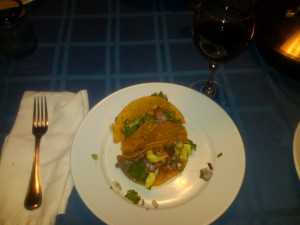Tasted our wines at World Class Wines store the other day down the road in Lake Oswego, Oregon. It’s a nice little wine shop with a rather eclectic and interesting offering. The owners, who are actually there running the place, are friendly, personable and real. I decanted our two reds in the morning and poured them back into their bottles before I went to work. My take on what they thought of the wines is this: they didn’t exactly know what to make of Leroy’s Finest but liked it, they flat out didn’t know what to make of Gampo (admittedly it was still pretty closed), and they quite liked Home Place. That said, they do want to buy some wine for the store, and they’d like me to come in for a winemaker’s tasting, as well.
It’s interesting learning what people do and don’t like about our wines. Most people view Leroy’s finest with intrigue, but some have disliked it outright because it doesn’t taste like riesling, or at least riesling from the US. The World Class Wines folks liked Home Place, but I think they were skeptical of Gampo. Conversely, an acquaintance and winemaker advisor of mine, who is a long time wine figure in Napa Valley (started/owned a winery, sold it to Mondavi, worked along side the late Robert Mondavi, refers to him as Bob, and is a wine industry educator) was very excited by Gampo, and said it tasted like it came straight from Italy. Go figure.
My gut feeling about the wines we would, and now do, grow and produce is they would not appeal to everyone because they are wines of composition and not performance as Matt Kramer has so eloquently described in a recent post.
This is my current take on our wines over a 24 hour period of tasting:
’09 Leroy’s Finest – lime, bay leaf, pine, capers and acidity that will remind you you’re alive
’08 Gampo – raspberry compote, cherry cordial, cooked beets, clove, grilled bread, fine tannins
’08 Home Place – crème de cassis, English fruit cake, wet earth, tobacco, cocoa powder, toasted coconut, chewy tannins



